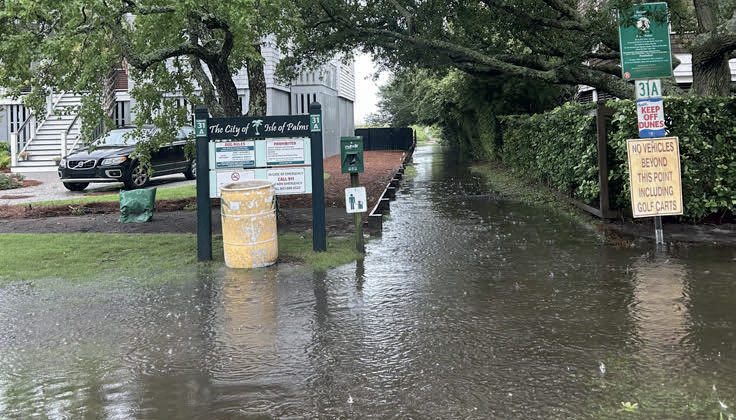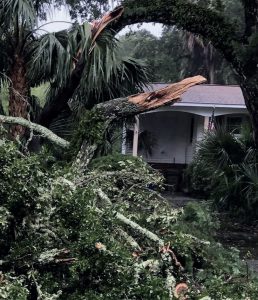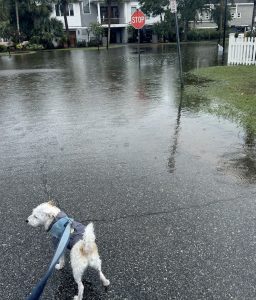 Isle of Palms has weathered its share of hurricane and tropical force winds, water and property damage long before the first recorded storm in 1851, but luckily this time for Isle of Palms residents, Tropical Storm Debby came and went without much more than a lot of rainfall and some initial anxiety
Isle of Palms has weathered its share of hurricane and tropical force winds, water and property damage long before the first recorded storm in 1851, but luckily this time for Isle of Palms residents, Tropical Storm Debby came and went without much more than a lot of rainfall and some initial anxiety
Mayor Phillip Pounds declared a state of emergency on Aug. 5, in anticipation of a storm surge warning originally predicted between 2-4 feet. City hall closed for three days, garbage pickup was suspended until Aug. 12 and the Emergency Operations Center was activated.
 And while Debby left some homes damaged and caused flooding in places, much of the 14-15 inches of rain didn’t stay long, and it took almost no time for IOP to return to normal.
And while Debby left some homes damaged and caused flooding in places, much of the 14-15 inches of rain didn’t stay long, and it took almost no time for IOP to return to normal.
“A tornado downed many trees on 25th Avenue, and we had minor damage to a few homes and cars,” Pounds said. “But public works has continued to pick up debris, and all of our staff did a fantastic job before, during and now after the storm.”
Isle of Palms sits only 11 feet above sea level – only 2 feet higher than neighboring Sullivan’s Island – making it susceptible to fallout from hurricanes and major storms. Despite its geography and low elevation, Isle of Palms has remained remarkably resilient – and so far, has been spared the worst of major hurricane disasters.
For example, in 1954, Hazel touched down at the South Carolina/North Carolina state line. In 1959, Gracie pushed into St. Helena Sound between Edisto Island and Hunting Island State Park. Then in 1989, Hugo landed on top of Sullivan’s Island. All three hurricanes were Category 4, inflicting catastrophic damage to homes, snapping and uprooting trees and downing power lines. Aside from Hugo, the last time a hurricane of any category made landfall on Isle of Palms was July 22, 1867 – more than a generation before the island started to become a coastal resort.
Not that the worst couldn’t still happen at some point. But flood prevention and drainage phase efforts have been underway since 2017, and the city recently completed Phase 3 drainage at 30th, 36th and 41st avenues.
“This time, we had few closed roads at the height of Debby, and a decent amount of standing water in many places,” Pounds said. “But our new drainage outfalls at 30th, 36th and 41st worked well.”
So if Debby is any indication of the future, IOP might be strong enough to withstand a major storm if it ever hits.
By L. C. Leach III




Leave a Reply